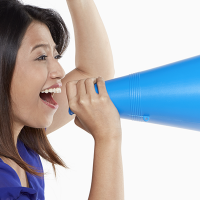Factors Influencing the Impact of Humor in Persuasion
Humor’s effectiveness will always ride the emotional tides of your audience members. How well a joke goes over may depend on whose company your prospects are in, whether they are winding down for the day or still up against deadlines or other workplace pressures, whether they are awake and alert or feeling drowsy, whether they have a headache, etc. Always be in tune with how your audience is feeling and always assess the atmosphere you’re in to determine whether it is conducive to humor.
There are a lot of factors that contribute to whether or not humor will be effective in persuading someone. Often, it will simply be the mood or situation that makes it obvious whether humor is appropriate or not. For example, if someone has just learned of a death in her family, you probably shouldn’t start cracking jokes.
Another example would be if you were speaking in a religious setting where there was an expectation that a certain degree of reverence always be maintained. You probably wouldn’t go wild with the humor in this kind of setting. The appropriateness of humor for a particular setting or mood is usually not too difficult to discern. You just have to be observant. What may be funny to one person one day will not be funny the next, even if it’s the exact same joke told in the exact same way.
There are many other less apparent factors that influence humor. Have you ever considered factors such as what time of day it is, the number of people in your audience or even the layout and lighting of the room? All of these things can influence how your humor will come across. As far as time of day, mornings are typically more stressful, since it is then when most people are confronted with all the demands that await them. Under certain circumstances, this stressfulness may be precisely the type of mood you’re looking for. Other times, you may want an audience that’s a little more relaxed. When people are on a lunch break or winding down for the day and readying themselves to leave work, you may find that they are more receptive to a good joke.
When considering the size of your audience, the general rule of thumb is “the bigger, the better“. That is, the bigger your audience, the more laughter you will typically get. Why is this? It’s because laughter is contagious. The more people involved, the more we laugh. For example, when a movie theater is packed, the laughter tends to be greater and last longer than when there are only four people in the audience. This is one of the reasons why TV producers use canned laughter in their programming. Often the scenario being acted out really isn’t even that funny, but studies show that the use of laugh tracks actually gets us to laugh more. Whether the material even registered as being funny or not, we are more inclined to laugh along if we hear others laughing.
Knowledge of this tendency can give you a real advantage when considering the layout of the room you’ll be speaking in. Notice the seating arrangement. How many people are expected to show up compared to how many chairs are set up? Always make sure there are less chairs set up than there are people expected. If audience members sit closer together, it will be easier to get the energy going and evoke more laughter than it would be if they were spread out all over the room. A seemingly sparse audience will surely dampen humor’s designed effect. A more compact seating arrangement will not only help people laugh more freely and more often, but it will also give off the illusion of greater attendance. Another consideration is the lighting of your speaking area. The audience’s ability to see your facial expressions and body language is of prime importance.




